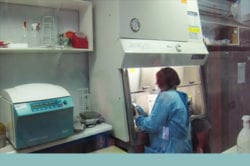
Neuraxial procedures in COVID-19 positive parturients – A review of current reports
Obstetric Anesthesia During the Coronavirus Disease 2019 Pandemic (Review)
The Timing of Labor Epidurals in COVID-19 Parturients: A Balance of Risk and Benefit

…our findings are reassuring, and indicate that pregnant women infected with COVID-19 may not experience more severe disease progression than non-pregnant women
Intensive Care Unit Admissions for Pregnant and Non-Pregnant Women with COVID-19

…early triple antiviral therapy was safe and superior to lopinavir–ritonavir alone in alleviating symptoms and shortening the duration of viral shedding and hospital stay in patients with mild to moderate COVID-19


RCOG and RCM respond to UKOSS study of more than 400 pregnant women hospitalised with coronavirus

…clinicians should recognize that new-onset, acute digestive symptoms in a patient with a possible COVID-19 contact should at least prompt consideration of the illness, particularly during the times of high COVID-19 incidence and prevalence.


Severe acute respiratory syndrome coronavirus 2 detection in the female lower genital tract
Clinical Characteristics and Results of Semen Tests Among Men With Coronavirus Disease 2019



Please log in to ObGFirst to access this page